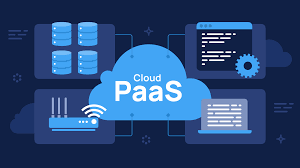Platform as a Service (PaaS) is a cloud computing model that provides developers with a platform and environment to build, deploy, and manage applications without the complexity of managing infrastructure. This article explores the fundamentals, benefits, challenges, adoption trends, and future prospects of PaaS, highlighting its transformative impact on software development and IT operations.
Fundamentals of PaaS
PaaS is a cloud service model that offers a comprehensive platform to support the entire lifecycle of application development and deployment. Key components include:
- Development Tools: Integrated development environments (IDEs), software development kits (SDKs), and frameworks to facilitate coding, testing, and debugging applications.
- Deployment Options: Tools and services for deploying applications seamlessly to the cloud, managing scalability, and automating deployment processes.
- Middleware Services: Pre-built components such as databases, messaging queues, caching services, and application servers that developers can integrate into their applications.
- Managed Services: Automated management of underlying infrastructure, including servers, storage, networking, and virtualization, by the PaaS provider.
Benefits of PaaS
- Accelerated Development: Enables rapid application development and deployment by providing ready-to-use development tools, templates, and libraries.
- Cost Efficiency: Reduces upfront costs and ongoing expenses associated with infrastructure procurement, maintenance, and scalability management.
- Scalability and Flexibility: Easily scales applications based on demand without worrying about infrastructure capacity, enabling businesses to respond quickly to changing requirements.
- Focus on Innovation: Frees developers from infrastructure management tasks, allowing them to focus on writing code, improving application features, and innovating.
Challenges in PaaS Adoption
- Vendor Lock-in: Potential challenges in migrating applications and data between different PaaS providers or transitioning to on-premises infrastructure due to platform-specific dependencies.
- Customization and Control: Limited control over underlying infrastructure and software configurations compared to on-premises solutions, which may require adapting workflows and development practices.
- Data Security and Compliance: Concerns about data protection, compliance with regulations (e.g., GDPR, HIPAA), and ensuring secure transmission and storage of sensitive information.
- Integration Complexity: Integration with existing systems, databases, and third-party services may require careful planning and consideration of compatibility and interoperability.
Adoption Trends and Future Prospects
- Microservices Architecture: Embracing microservices-based development to build scalable and modular applications that can be easily managed and updated within a PaaS environment.
- Serverless Computing: Integration of serverless computing capabilities within PaaS platforms to enable event-driven architectures and optimize resource utilization.
- Artificial Intelligence (AI) and Machine Learning (ML): Incorporation of AI/ML services and tools into PaaS offerings to facilitate data analytics, predictive insights, and intelligent automation.
- Edge Computing Integration: Exploring opportunities to extend PaaS capabilities to edge locations for low-latency processing, improved performance, and enhanced user experiences.
Conclusion
PaaS continues to revolutionize software development by providing developers and businesses with scalable, cost-effective platforms to build, deploy, and manage applications in the cloud. As organizations embrace digital transformation and seek to innovate faster, PaaS offers a strategic advantage by enabling rapid development cycles, reducing time-to-market, and enhancing operational efficiency. Embracing best practices in security, scalability, and integration will be crucial in harnessing the full potential of PaaS and driving sustainable growth in the digital era.



